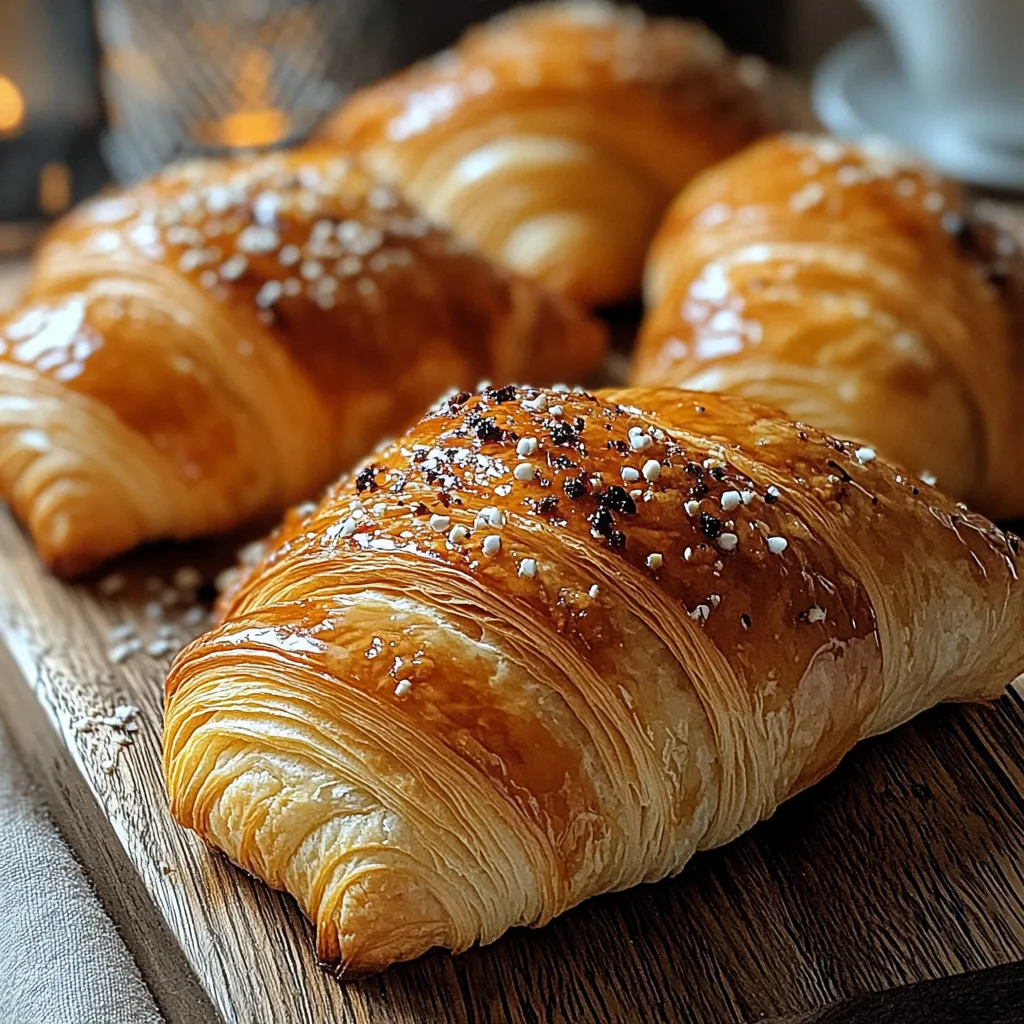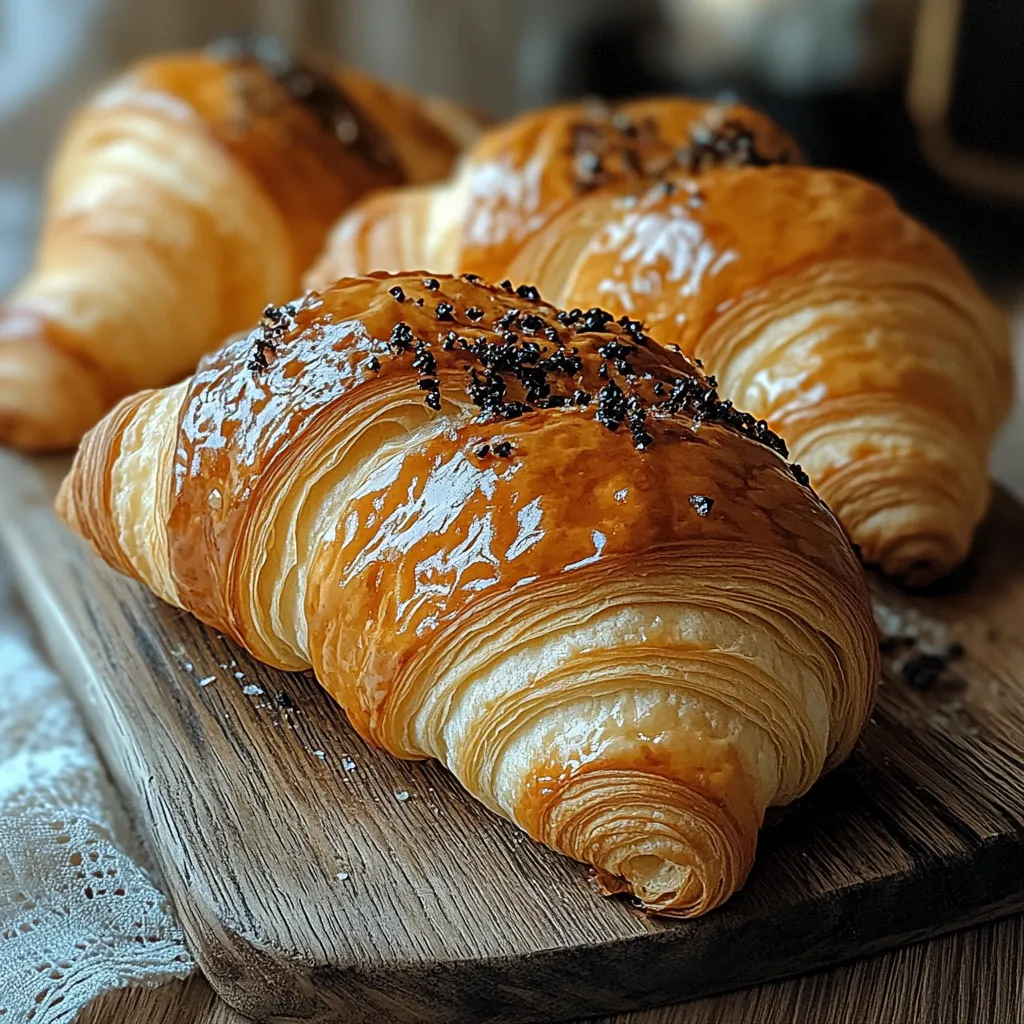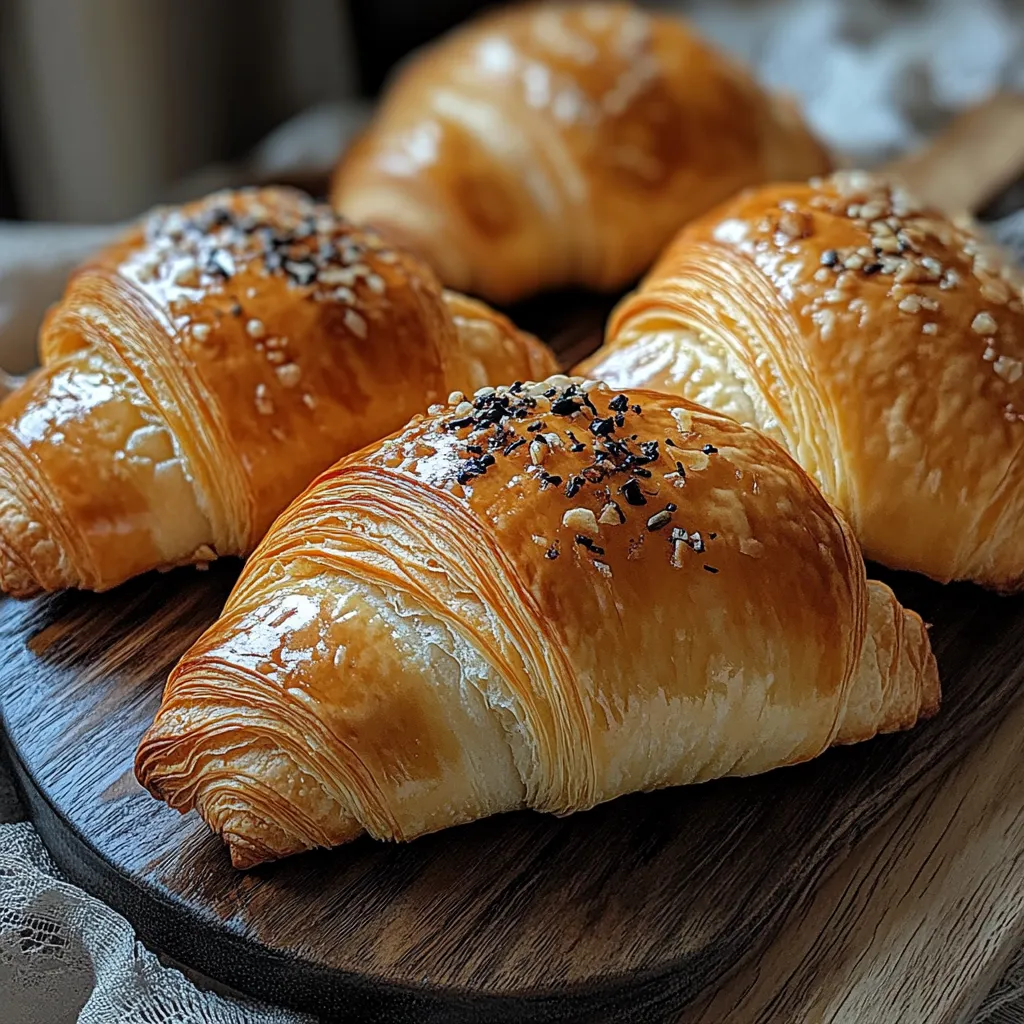 Pin it
Pin it
Golden Bliss Croissants have become a weekend tradition in my kitchen delivering buttery layers and irresistible aromas that fill the house. This recipe is crafted to yield classic French style croissants with a crisp exterior and a soft honeycomb crumb. Whether you knead for self care or to impress guests the effort pays off with melt-in-your-mouth results that stand miles above store bought.
The first time I made these croissants I could not believe my kitchen smelled like a real Parisian bakery. Kneading and folding became a peaceful morning ritual I look forward to every month.
Ingredients
- All purpose flour: Delivers structure and a tender crumb Choose unbleached for best texture
- Granulated sugar: Adds a hint of sweetness and boosts browning Use superfine for smooth blending
- Salt: Essential for balancing flavor Use kosher or sea salt for clean taste
- Instant yeast: Lends rise and airiness Check freshness for reliable lift
- Unsalted butter: Supplies rich flavor and creates those signature flaky layers Use European style high butterfat if possible
- Whole milk: Brings moisture and softness Try to use full fat for optimal texture
- Cold water: Keeps the dough temperature controlled to deter premature butter melting
- Large egg: Used for the glossy finish Seek organic or free range eggs for best color
Step-by-Step Instructions
- Prepare the Dough:
- Combine flour sugar salt and instant yeast in a large bowl making sure they are well mixed for even distribution of leavening and flavor. Cube one cup of cold butter and work it into the flour with your fingers or a pastry cutter until most pieces are the size of peas. Warm the milk gently so it feels just slightly warmer than your skin stir in the cold water and pour over the flour and butter blend. Use a sturdy spoon to stir until shaggy then switch to your hands and knead on a lightly floured surface for about five minutes working the dough until it smooths out but is still tender. Wrap tightly and chill for at least two hours this essential rest keeps the butter distinct for flaky layers.
- Create the Butter Block:
- While the dough chills place the remaining butter between two sheets of parchment paper. Pound gently with a rolling pin then roll out into a neat eight inch square. Keep this block chilled so it stays firm for proper lamination.
- Laminate the Dough:
- Roll the cold dough on a floured counter into a twelve inch square. Place the chilled butter block centred on the dough and fold the dough corners over the butter pressing the seams to encapsulate the block completely. Carefully roll into a twenty by ten inch rectangle keeping even pressure so the butter remains in an even layer. Fold into thirds like a letter. Wrap and refrigerate for thirty minutes.
- Repeat the Laminating Process:
- After chilling roll the dough back out to a twenty by ten inch rectangle. Fold into thirds again. Chill thirty minutes. Repeat this roll and fold process once more for three total turns refrigerating each time. These steps create dozens of flaky layers.
- Shape the Croissants:
- Roll the rested dough out into a large rectangle about twenty four by twelve inches and just one eighth inch thick. With a sharp knife trim the edges for even layers then slice long triangles that are about four inches wide at the base. Working from the base gently but firmly roll each piece towards the tip stretching the dough slightly as you go. Tuck the ends to form the classic crescent.
 Pin it
Pin it
I have a particular fondness for the rich golden butter that takes these from good to remarkable. My kids are always quick to sneak a warm croissant from the tray and it has become the most requested treat for lazy weekend breakfasts.
Storage Tips
If you have leftovers cool croissants completely and store in an airtight container at room temperature for up to two days. For longer storage freeze individually wrapped croissants in a freezer bag. Toast in a hot oven straight from frozen to revive the crispness and never microwave which makes them tough.
Ingredient Substitutions
While I swear by real butter you can sub cultured or plant based butters for a twist in flavor or to suit dietary needs just make sure it is firm and solid straight from the fridge. For the flour bread flour can be used for a chewier result and you can try plant based milks but full fat cow’s milk creates the classic tender bite you expect from croissants.
Serving Suggestions
Classic croissants shine all by themselves but you can enhance a breakfast spread with strawberry jam whipped honey or dark chocolate spread. I love to split leftovers and turn them into ham and cheese sandwiches or almond croissants for a brunch worthy treat. Pair with strong coffee for an unbeatable Paris style morning.
A Bite of History
Croissant history traces back to Austria’s kipferl but became the flaky golden pastry we know after French bakers embraced the dough folding technique. Today croissants grace bakeries across the globe and remain a symbol of pastry artistry and morning indulgence.
 Pin it
Pin it
With practice and patience you can master these buttery delights to rival any bakery.
Frequently Asked Questions
- → How do you achieve flaky layers in croissants?
Flaky layers come from laminating dough with cold butter through repeated rolling and folding, keeping butter intact between dough sheets.
- → Why is it important to chill croissant dough between turns?
Chilling relaxes the dough and keeps the butter firm, which prevents it from melting into the dough, resulting in distinct, airy layers.
- → Can I make croissants ahead of time?
Yes, shaped croissants can be refrigerated overnight and baked fresh in the morning for optimal flakiness and taste.
- → What role does the egg wash play?
An egg wash brushed on before baking creates a shiny, deeply golden crust, enhancing the croissants' appearance and texture.
- → How do I know when croissants are baked perfectly?
Croissants are done when they are evenly golden brown all over, with crisp exteriors and slightly puffed, light interiors.
